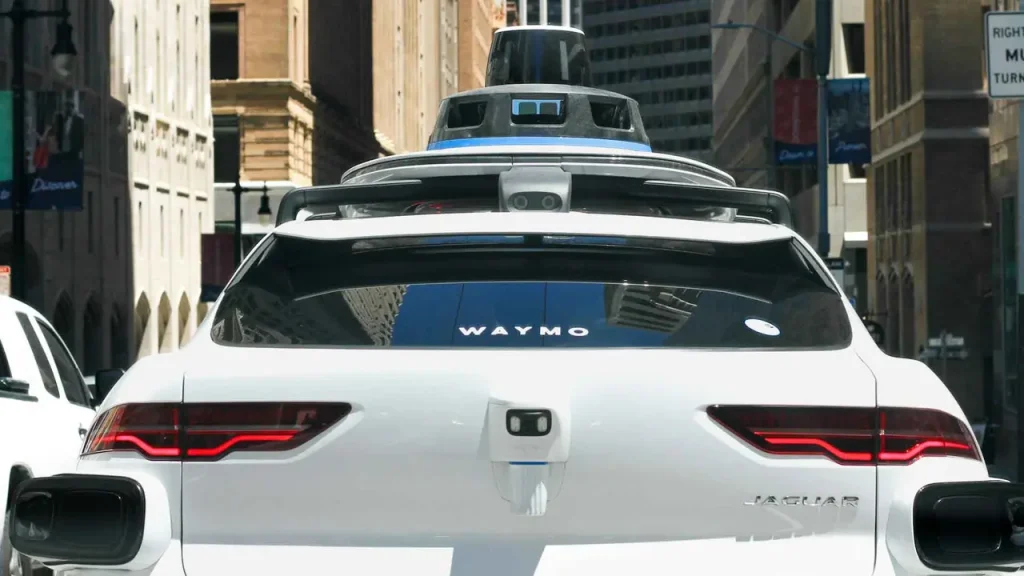
The Future is Now: autonomous vehicles and robotics in cars Explained
I still remember that agonizingly long drive from one end of the country to the other. Just endless stretches of motorway, the drone of the engine, and the sheer boredom of it all. My eyes felt like sandpaper. My brain was definitely running on fumes. And the whole time, a single thought bounced around my skull: “Why isn’t this car driving itself?” It felt like a pipe dream then, something out of a sci-fi movie. But that future is no longer just a dream. It’s rapidly becoming our reality, all thanks to the incredible advancements in autonomous vehicles and robotics in cars. This isn’t just about cruise control anymore; it’s about fundamentally changing our relationship with driving, travel, and even our cities.
The Dawn of Driverless Mobility: Understanding Autonomous Vehicles
So, let’s get down to it. What are we actually talking about when we mention this technology? It’s a revolution on wheels. This technology represents a paradigm shift, moving from human-controlled machines to intelligent partners that navigate the world for us. It’s complex, sure, but the core idea is simple: making cars smarter, safer, and more efficient by giving them the ability to drive themselves.
What Defines an Autonomous Vehicle?
An autonomous vehicle, often called a self-driving or driverless car, is a vehicle capable of sensing its environment and operating without human involvement. Forget the semi-smart features in your current car for a second. We’re talking about a vehicle that can genuinely take you from point A to point B while you read a book, take a nap, or catch up on emails. It’s powered by an intricate blend of sensors, software, and processing power. At its heart, what is automotive robotics technology if not the application of robotics to create a machine that can perform the complex, dynamic task of driving? This isn’t just a fancy feature; it’s the core identity of the entire system.
Robotics at the Core: How Cars Learn to Drive
Let’s be clear: these cars are robots. Sophisticated, fast-moving robots, but robots nonetheless. The “driving” part is handled by a suite of robotic systems. Actuators control the steering, braking, and acceleration based on commands from a central computer. This computer processes a constant stream of data from its sensors to understand the world around it. It’s a continuous loop of seeing, thinking, and acting, happening thousands of times per second. This is the essence of this field; it’s the seamless integration of mechanical action and artificial thought that makes the magic happen.
Navigating the Spectrum: Levels of Driving Automation
One of the biggest misconceptions is that a car is either self-driving or it’s not. It’s not that black and white. The reality is a spectrum, a ladder of automation that vehicles climb as they get smarter. The Society of Automotive Engineers (SAE) created a handy classification system to define these different capabilities. Understanding these levels is key to grasping where the industry is today and where this incredible field is headed. It’s a roadmap to our driverless future.
From Driver Assistance to Full Autonomy: SAE Levels Explained
Getting a handle on the SAE levels of autonomous driving explained properly is crucial. It helps manage expectations and understand the real-world capabilities of the vehicles being tested and sold today. Not all “self-driving” features are created equal, and this framework provides the clarity we all need. Let’s break it down.
Level 0: No Automation
This is your classic car. You do everything. Steering, braking, accelerating—it’s all on you, the human driver. The car might have safety features like an emergency braking system, but it doesn’t actively drive itself in any capacity.
Level 1: Driver Assistance
Here, the car can help with one specific task at a time. Think of adaptive cruise control, which maintains a set distance from the car in front, or lane-keeping assist that nudges you back if you drift. You’re still doing most of the driving, but you have a helpful co-pilot for a single function.
Level 2: Partial Automation
This is the most common level you’ll find on new cars today. The vehicle can control both steering and speed simultaneously, like with advanced highway assistance systems. But, and this is a huge but, you must remain fully engaged, with your hands on the wheel and your eyes on the road. The car is helping, but you are 100% responsible. We are still a long way from true self-driving systems at this stage.
Level 3: Conditional Automation
This is where things get interesting and, honestly, a bit tricky. At this level, the car can manage most aspects of driving in certain conditions, allowing the driver to take their attention away from the road. However, the driver must be ready to intervene if the car requests it. This hand-off is a major technical and human-factors challenge in the development of these vehicles.
Level 4: High Automation
A Level 4 vehicle can operate fully on its own within a specific “operational design domain” (ODD). This might mean it can handle all driving within a certain city or on specific highways. You don’t need to be ready to intervene within that ODD. If it drives outside its designated area, it will safely pull over. Many robotaxi services today operate at this level.
Level 5: Full Automation
The ultimate goal. A Level 5 vehicle can drive itself anywhere, under any conditions, without any human intervention. There might not even be a steering wheel or pedals. It’s a true passenger experience, the final frontier for the technology.
The Technological Backbone: Key Innovations Powering Self-Driving Cars
So, how do autonomous vehicles function? It’s not one single piece of tech, but a symphony of hardware and software working in perfect harmony. The number of systems involved in advanced autonomous vehicles is staggering. They essentially recreate the human ability to perceive, process, and react, but with the precision and tirelessness of a machine.
Sensing the World: Lidar, Radar, and Cameras
A car can’t drive what it can’t see. Autonomous vehicles use a multi-layered sensor suite to build a 360-degree, real-time map of their environment. This is where sensor technology for self-driving cars comes into play. Cameras act as the eyes, providing high-resolution color images. Radar is excellent at detecting objects and their speeds, and it works well in bad weather. Lidar (Light Detection and Ranging) uses lasers to create incredibly detailed 3D maps of the surroundings, providing precise measurements. By fusing data from all three, the system gets a comprehensive and redundant view of the world that is far more robust than human senses alone. The future of this technology depends on this perception.
The Brain of the Car: Artificial Intelligence and Machine Learning
All that sensor data is useless without a brain to interpret it. This is where AI and machine learning come in. The car’s computer uses complex algorithms to identify objects—pedestrians, cyclists, other cars, traffic signs—and predict their behavior. This process of figuring out how AI controls autonomous cars is mind-blowing. The system learns from vast amounts of driving data, constantly improving its ability to navigate complex, unpredictable human environments. It’s a similar kind of intelligence that is transforming other industries, as detailed in articles like the impact of AI on customer service, where learning algorithms are reshaping interactions. For these vehicles, this AI brain is the absolute core of the entire operation.
Connectivity and Communication: V2X Technology
A car’s own senses are powerful, but what if it could see around corners? That’s the promise of Vehicle-to-Everything (V2X) communication. This technology allows vehicles to talk to each other (V2V), to infrastructure like traffic lights (V2I), and to pedestrians (V2P). This network of communication provides crucial information that sensors can’t see, like a car braking hard two blocks ahead or an approaching emergency vehicle. This constant dialogue makes the entire traffic system safer and more efficient. The progress of autonomous vehicles is tied to this connectivity.
Transforming Our Lives: The Benefits of Autonomous Driving
This isn’t just technology for technology’s sake. The push for this technology is driven by the promise of profound societal benefits. From saving lives to reclaiming lost time, the potential impact is enormous. There are so many benefits of self-driving car systems that it’s hard to list them all, but a few stand out.
Enhancing Road Safety and Reducing Accidents
Let’s be brutally honest. Humans are not always great drivers. We get distracted, we get tired, we make poor decisions. Over 90% of traffic accidents are caused by human error. These systems don’t get distracted or drive drunk. They have a 360-degree view and superhuman reaction times. The potential to drastically reduce road fatalities is perhaps the single most important driver behind this entire industry.
Boosting Efficiency and Reducing Traffic Congestion
Imagine a world with no traffic jams. Autonomous cars can communicate and coordinate their movements, driving closer together and maintaining a smoother flow of traffic. They can optimize routes in real-time to avoid congestion and accelerate and brake more efficiently, saving fuel. This efficiency is a massive selling point for this technology.
Expanding Mobility and Accessibility for All
This one is personal for me. I think about elderly relatives who have lost their independence because they can no longer drive safely. The world of autonomous vehicles promises to change that. It could provide freedom and mobility to the elderly, people with disabilities, and others who are unable to drive, connecting them to their communities and essential services.
Overcoming the Hurdles: Challenges and Concerns in Autonomous Vehicle Development
Of course, the road to a fully autonomous future is full of potholes. It’s not as simple as just flipping a switch. There are massive technical, ethical, and societal challenges to overcome. Frankly, some of them are quite scary. These challenges of driverless car adoption are what keep engineers and ethicists up at night, and for good reason.
Ethical Dilemmas and Decision-Making
This is the big one: the trolley problem. What happens when an accident is unavoidable? Does the car’s programming choose to hit a pedestrian to save its occupant, or sacrifice the occupant to save a group of people? The ethical implications of autonomous vehicles are profound. Who is responsible for that decision? The owner? The manufacturer? The programmer? There are no easy answers, and these are questions we must answer before these cars become widespread.
Cybersecurity Threats and Data Privacy
Anything connected to a network can be hacked. The thought of a malicious actor taking control of a vehicle, or even an entire fleet of them, is terrifying. Autonomous vehicle cybersecurity risks are a top priority. Protecting these complex systems from cyberattacks is paramount to ensuring public safety. Furthermore, these cars collect enormous amounts of data about where you go and what you do. Who owns that data, and how is it protected? The progress in this field hinges on solving this.
Regulatory Frameworks and Legal Responsibilities
Our laws were written for human drivers. Who gets the ticket if a self-driving car speeds? Who is legally liable in an accident? Governments and regulatory bodies are scrambling to create a legal framework for driverless cars that can address these new and complex questions. The pace of technology is far outstripping the pace of legislation, creating a massive grey area for the field.
Public Perception and Trust
Ultimately, none of this matters if people are too afraid to use the technology. Building public trust in autonomous vehicle technology is arguably the biggest hurdle of all. It takes just one high-profile accident to set back public perception for years. People need to feel safe and confident that the technology is reliable. I’m excited about the future, but would I let my car drive my family through a blizzard tomorrow? I’m not so sure. We are just at the beginning of building this trust for these systems.
The Road Ahead: The Future of Autonomous Vehicles and Robotics
Despite the challenges, the momentum is undeniable. The journey towards a fully autonomous future continues, with exciting innovations emerging all the time. The integration of this technology is set to reshape our world in ways we’re just beginning to imagine.
Integration into Smart Cities and Logistics
The true potential of autonomous vehicles will be unlocked when they are integrated into a larger smart city ecosystem. Imagine traffic lights that communicate with cars to optimize flow, public transport pods that arrive on demand, and a revolution in logistics with autonomous trucking and logistics solutions operating 24/7. This integration will make our cities cleaner, safer, and more efficient.
Emerging Trends and Innovations
The innovation isn’t slowing down. We’re seeing rapid advancements in AI, sensor technology, and computing power. The future applications of robotics in cars are vast, from delivery bots that are dispatched from larger vehicles to modular vehicle platforms that can be configured for different purposes. The evolution of car robotics is one of the most exciting fields to watch, as these systems become more capable and integrated into our daily lives.
Conclusion: Paving the Way for a Robotic Future on Wheels
From a simple wish on a mind-numbing road trip to a global technological revolution, the journey of autonomous vehicles and robotics in cars is nothing short of extraordinary. The path is complex, filled with immense promise and significant challenges. But one thing is certain: we are moving towards a future where the act of driving is optional, our roads are safer, and our lives are fundamentally changed by the intelligence we’ve built into our wheels. The fusion of autonomous vehicles and robotics in cars is not a question of if, but when.







